Abstract
Children first learned by means of a teaching program to discriminate a circle from relatively flat ellipses. Children in the control group then proceeded into a program which gradually reduced the difference between the circle and the ellipses. They advanced to a finer discrimination when they made a correct choice, and reversed to an easier discrimination after making errors (“backup” procedure). The children made relatively few errors until they approached the region of their difference threshold (empirically determined under the conditions described). When they could no longer discriminate the forms, they learned other bases for responding that could be classified as specifiable error patterns. Children in the experimental group, having learned the preliminary circle-ellipse discrimination, were started at the upper end of the ellipse series, where it was impossible for them to discriminate the forms. The backup procedure returned them to an easier discrimination after they made errors. They made many errors and reversed down through the ellipse series. Eventually, most of the children reached a point in the ellipse series where they abandoned their systematic errors and began to make correct first choices; then they advanced upward through the program. All of the children advanced to ellipse sizes that were much larger than the ellipse size at the point of their furthest descent.
Full text
PDF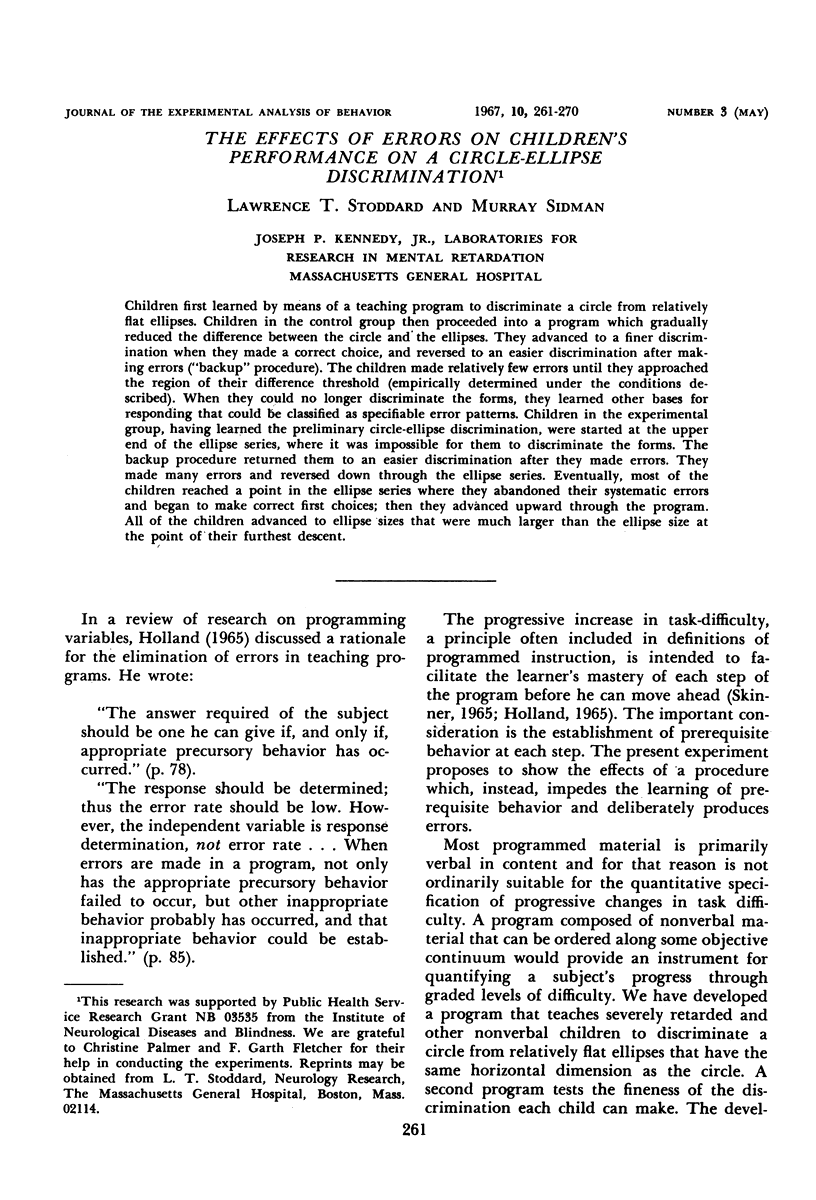
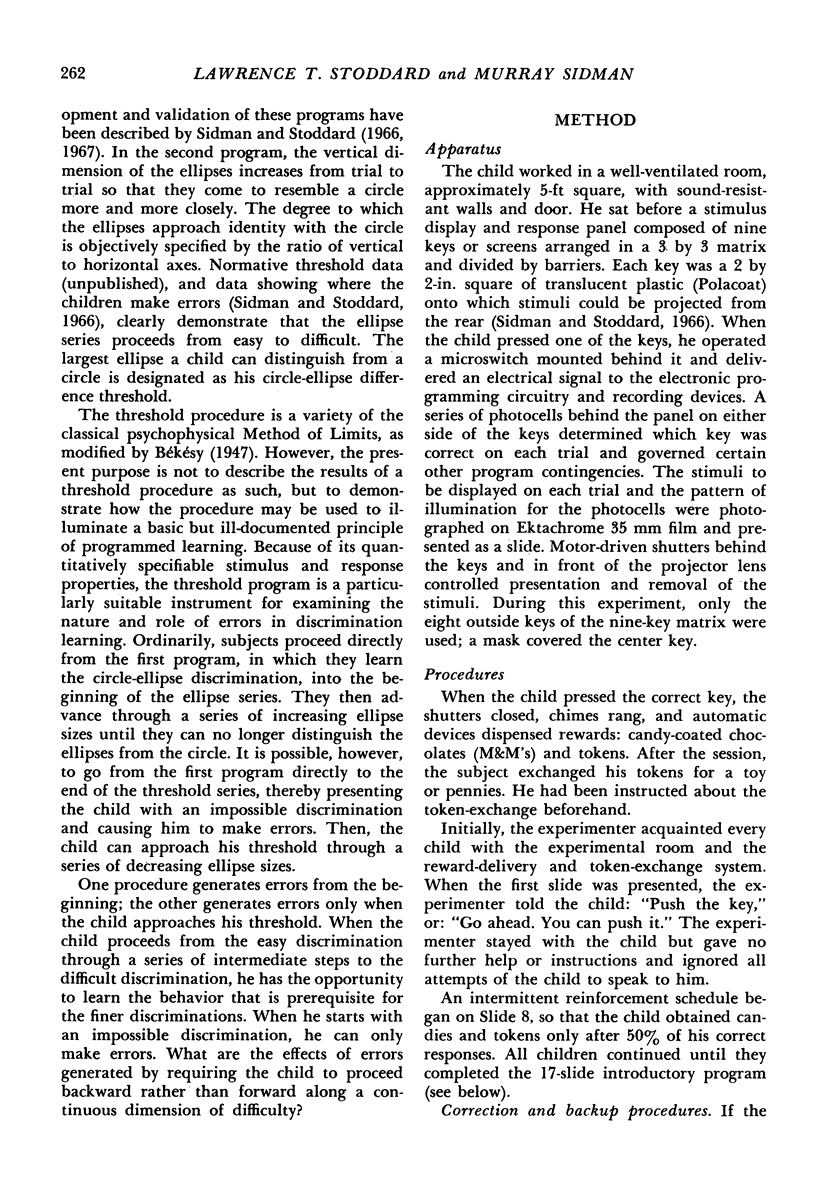
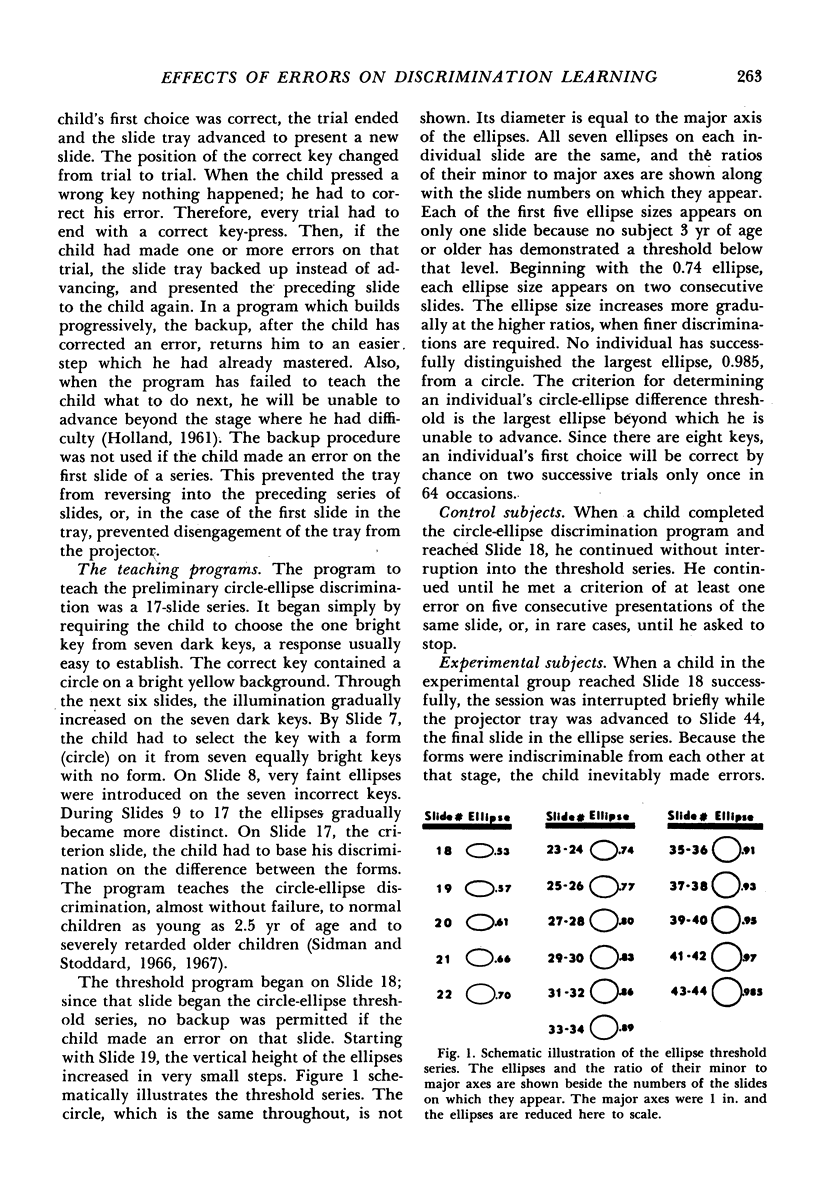
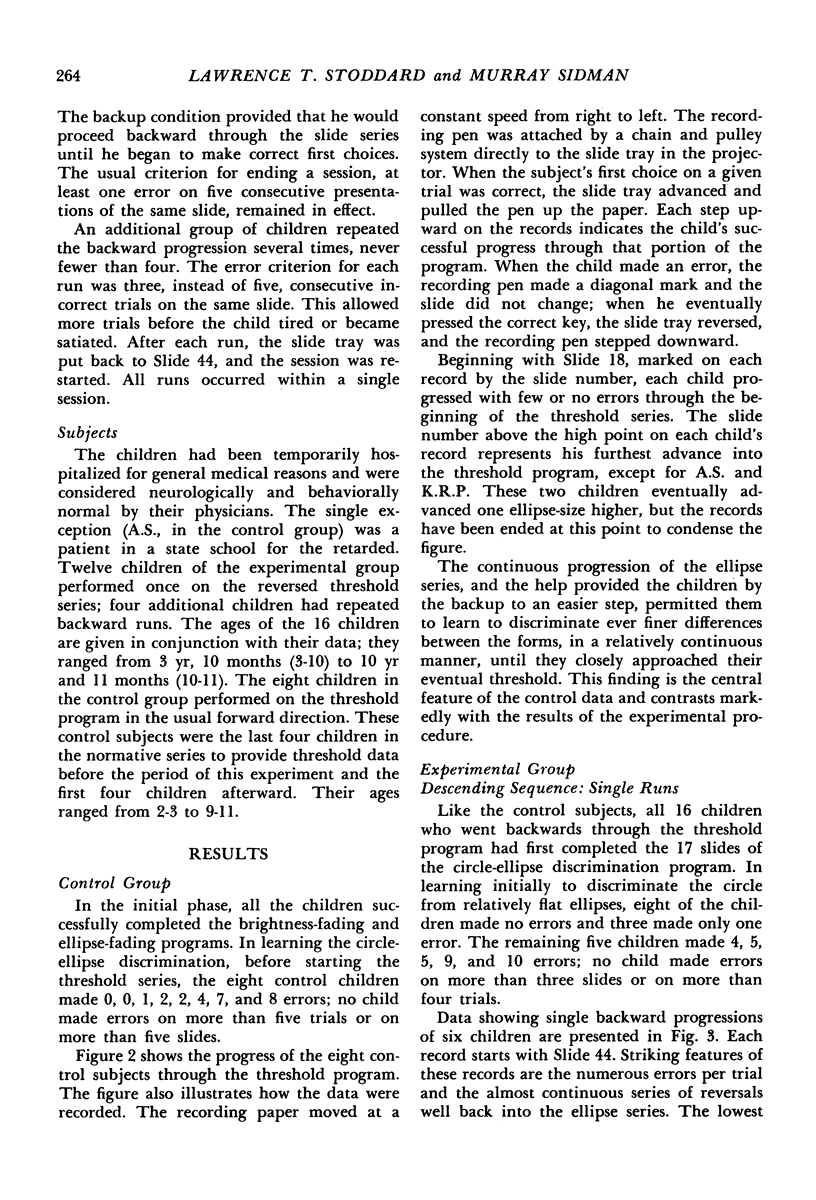
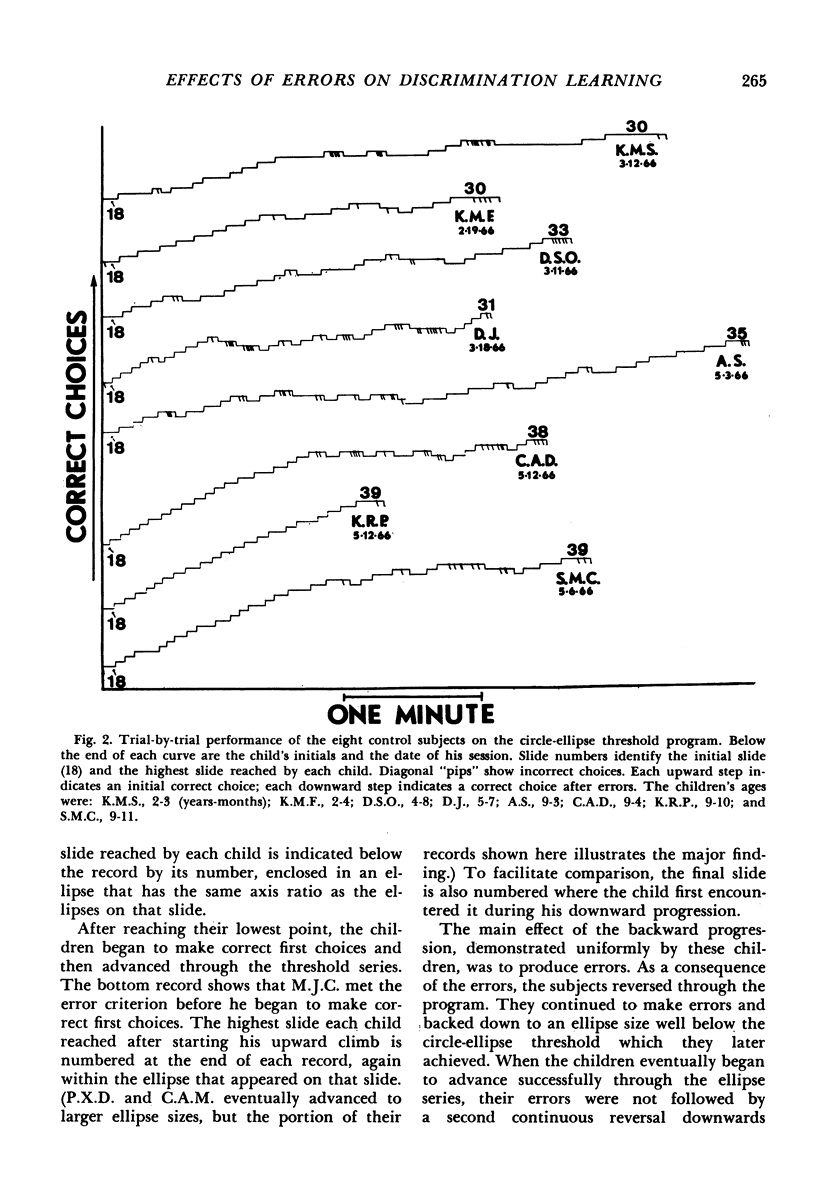
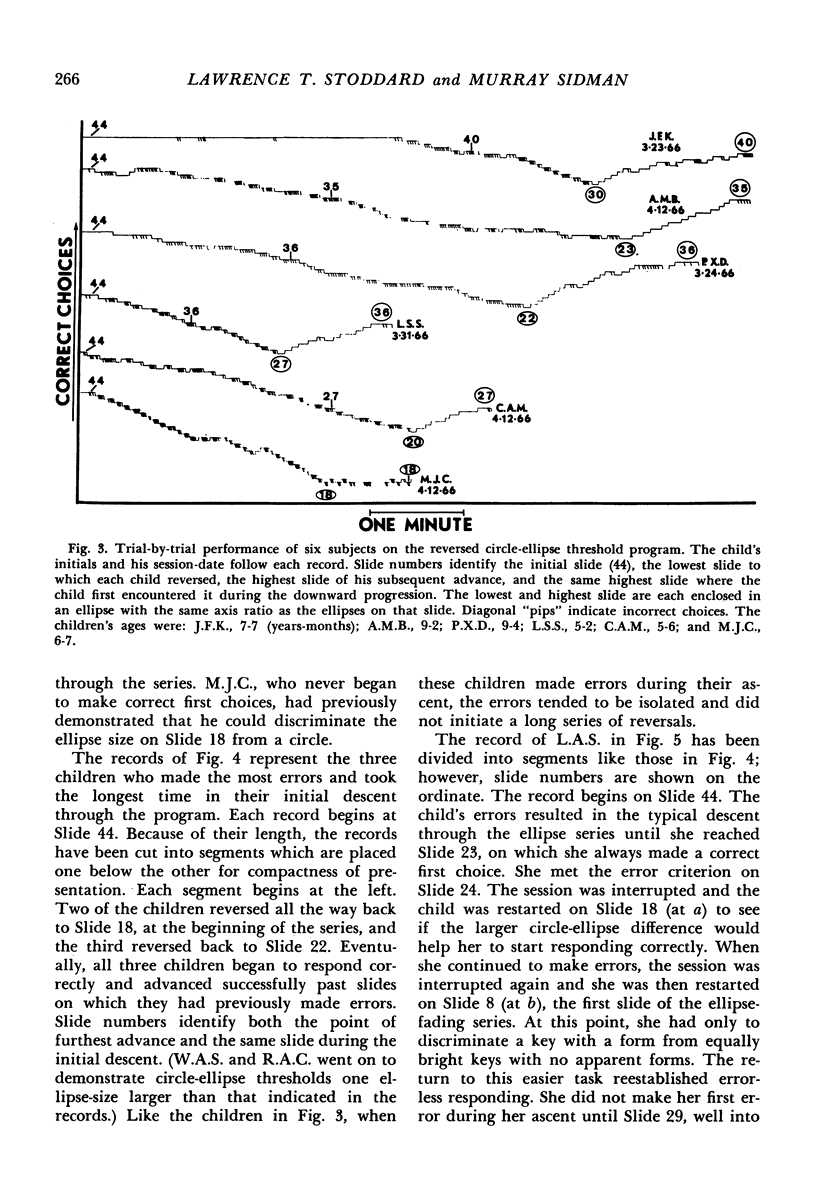
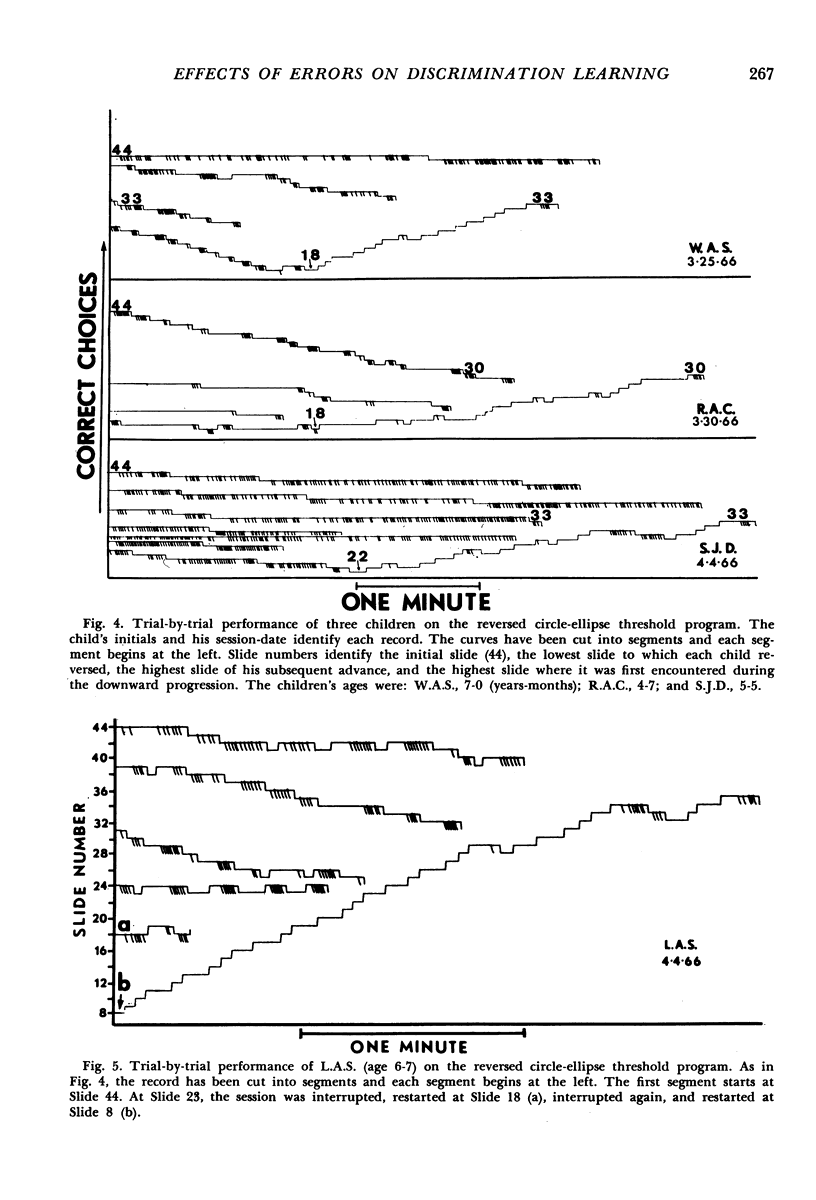
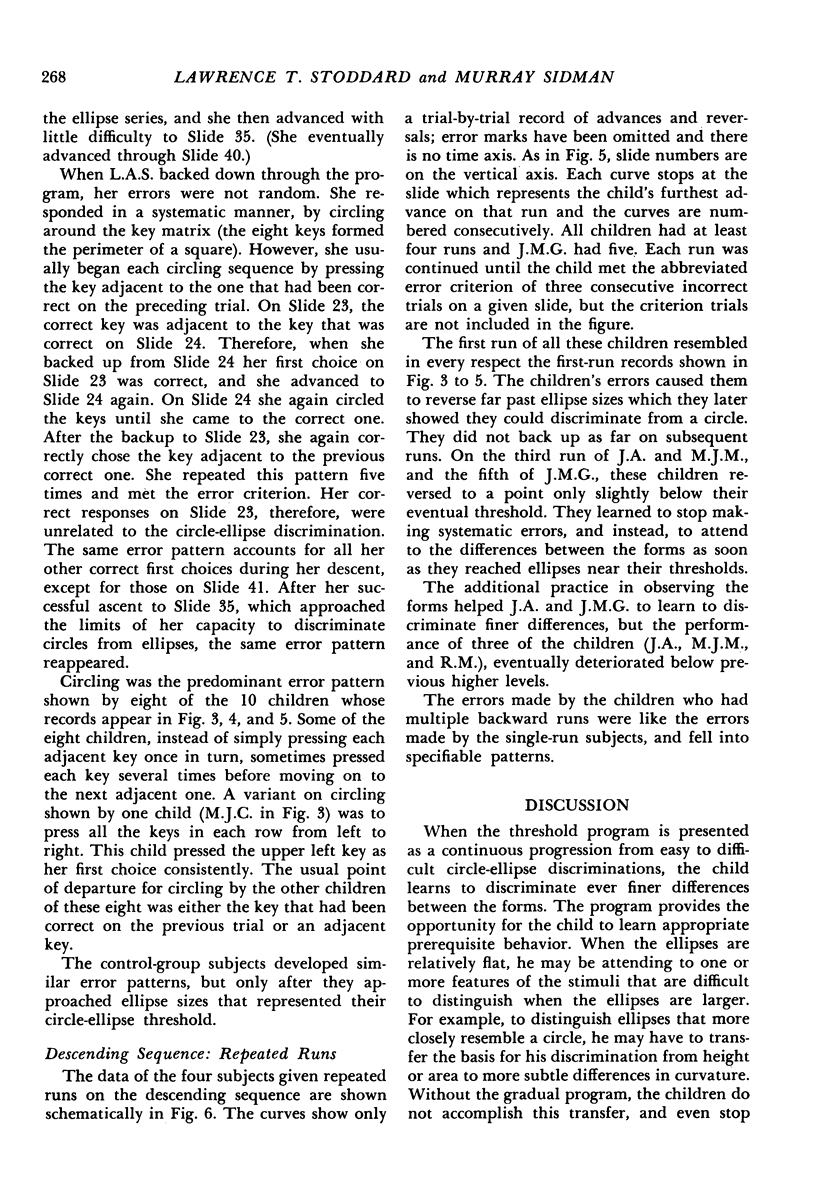
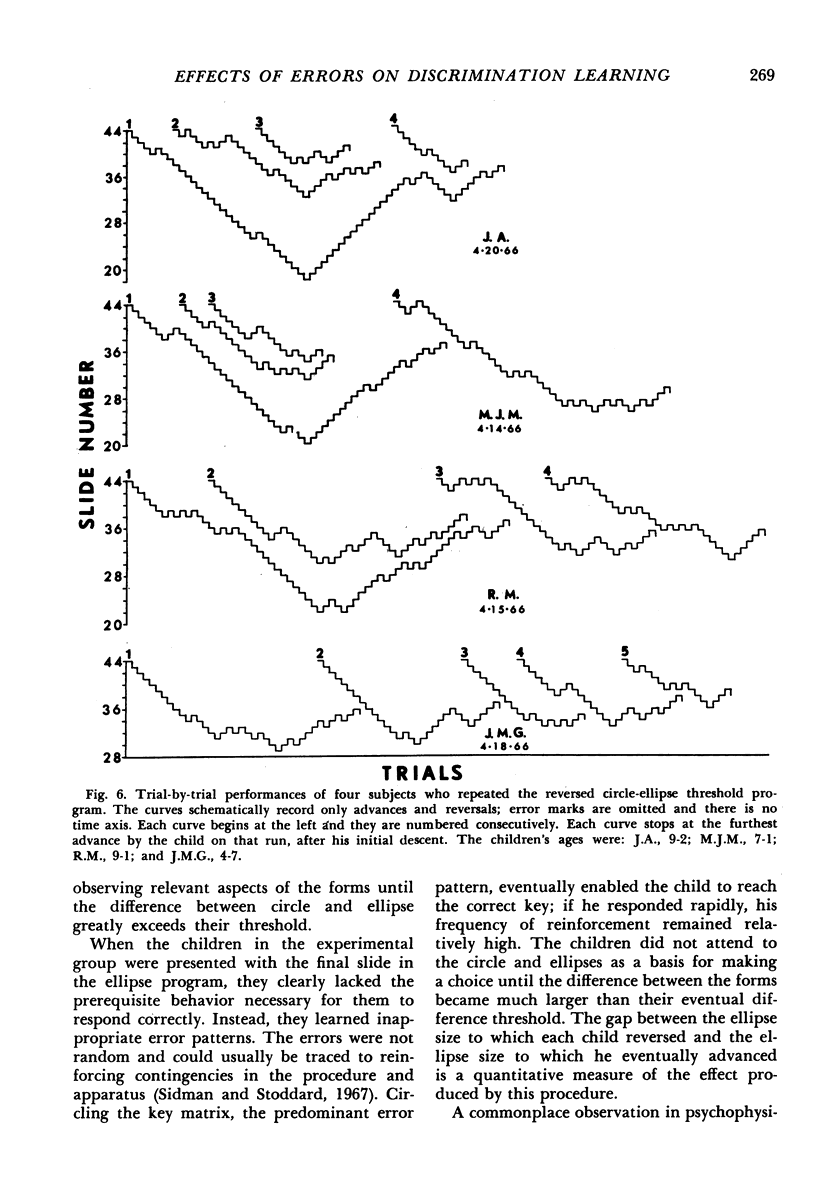
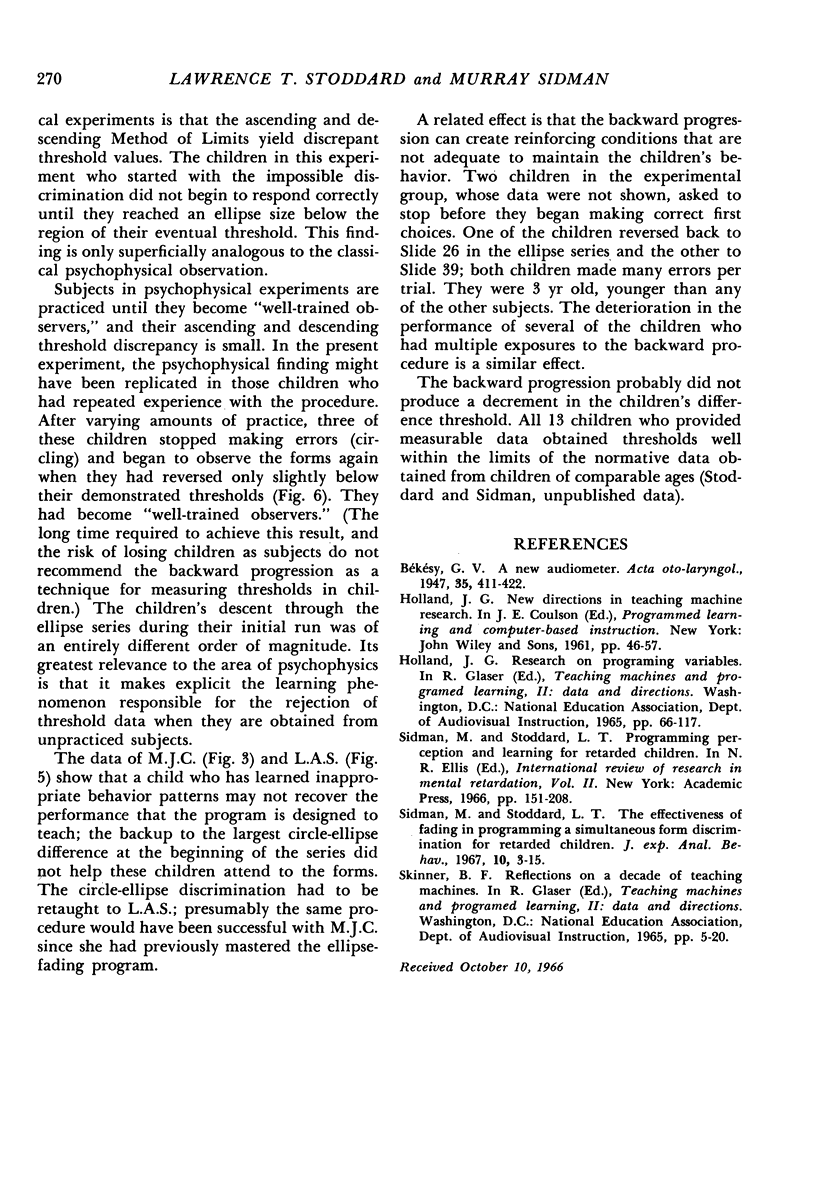
Selected References
These references are in PubMed. This may not be the complete list of references from this article.
- Sidman M., Stoddard L. T. The effectiveness of fading in programming a simultaneous form discrimination for retarded children. J Exp Anal Behav. 1967 Jan;10(1):3–15. doi: 10.1901/jeab.1967.10-3. [DOI] [PMC free article] [PubMed] [Google Scholar]


